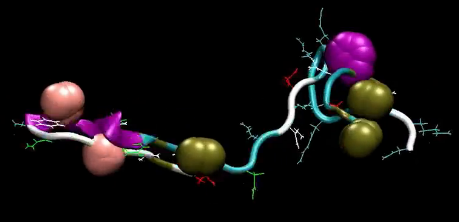Folding@home’s biological research now on supercomputers
November 21, 2011

By moving protein-folding modeling to supercomputers, researchers hope to open the door to large numbers of scientists (credit: Stanford University)
A new distributed framework for supercomputers called Copernicus, based on of the computing technology used in Folding@home, has been developed by Stanford researchers and presented at the SC11 supercomputing conference.
With open-source Copernicus software, other researchers can now run simulations, including molecular models, using processor time on multiple supercomputers or computing clusters, rather than home computers. With an interest in solving protein structures and having large computing clusters on hand, pharmaceutical companies are an example of one potential Copernicus user-group.
Folding@home is a distributed computing project that borrows computing time from home computers to simulate how proteins take shape. It uses processor time donated by millions of home computer and video game console users and has advanced the field of molecular dynamics by cutting protein-folding simulation times from years to days. Understanding how folding goes awry could lead to cures for diseases caused by protein misfolding, like Alzheimer’s and Parkinson’s.